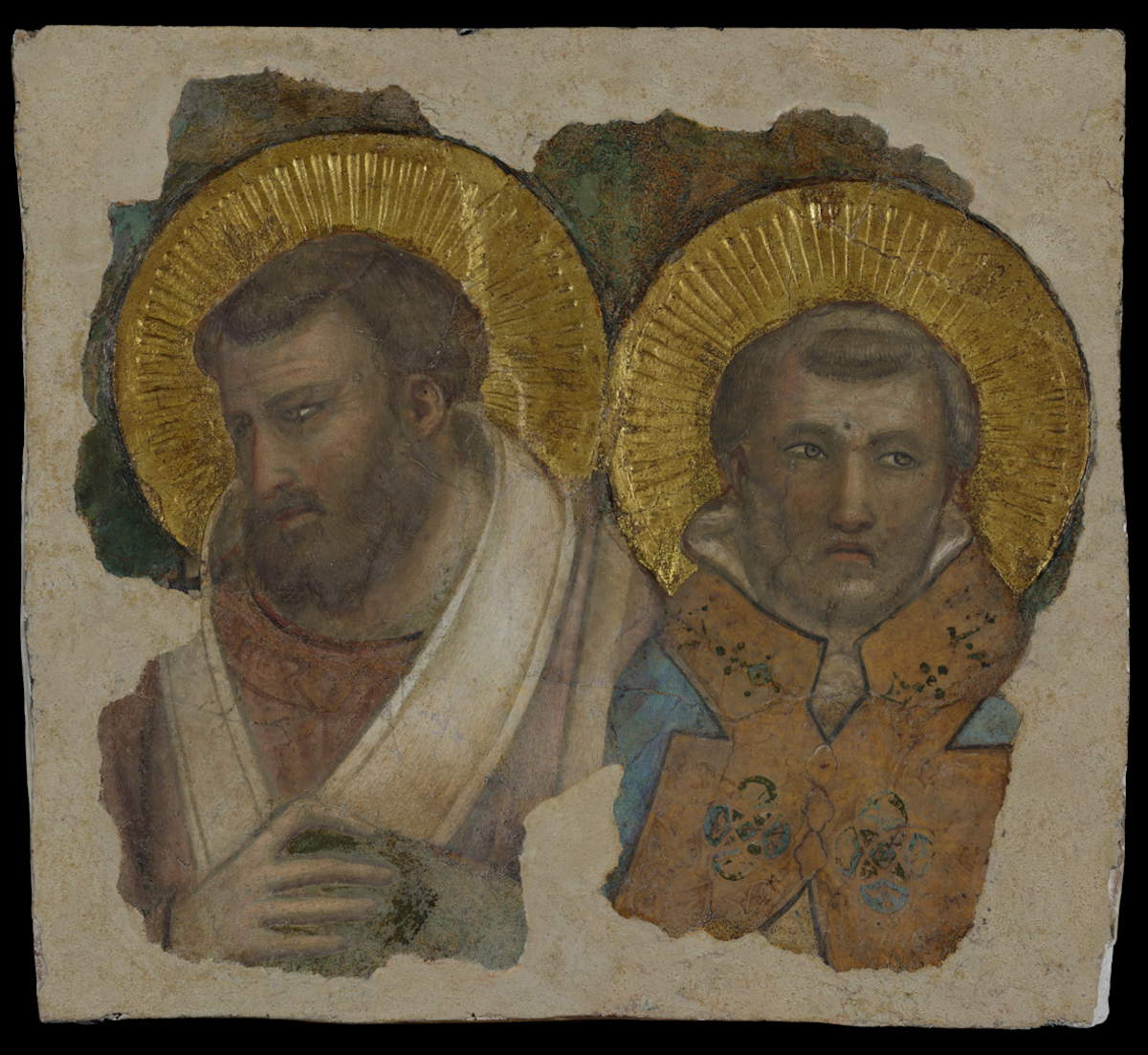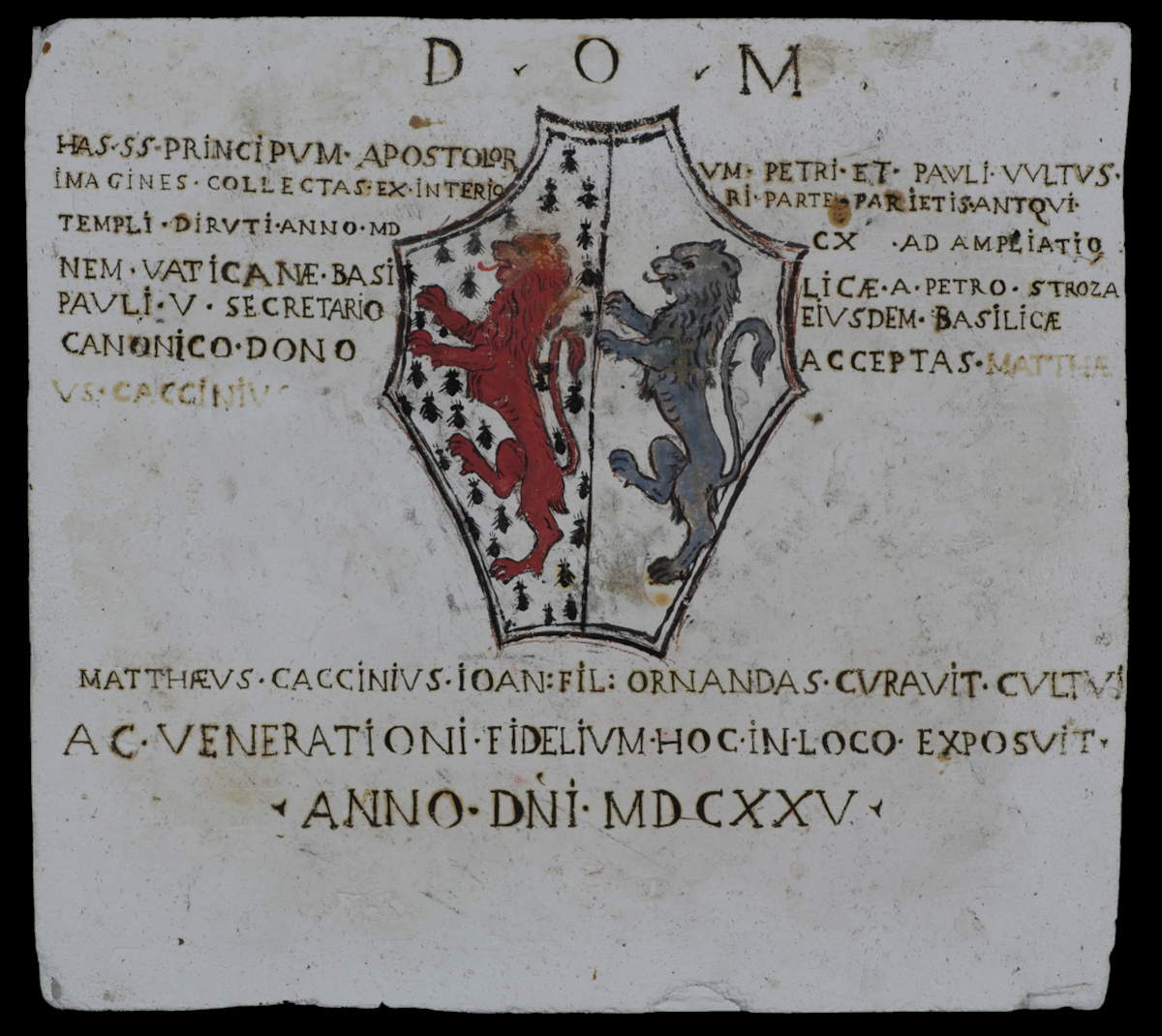From July 29 to Nov. 1, 2025, the Museo dell’Opificio delle Pietre Dure in Florence will host, as part of the program “Caring for Art. Restorations on display,” a work of extraordinary relevance to the artistic and academic scene: the so-called Vatican Fragment. It is the only surviving element of the mural painting cycle that Giotto, together with his workshop, created in the first quarter of the 14th century inside theancient Basilica of St. Peter’s in the Vatican. A work of the highest historical and artistic value that can now be admired after a complex restoration conducted between 2016 and 2019 by the Opificio.
The Vatican Fragment represents a rare testimony of Giotto’s Roman activity. It is a detached portion of wall painting, now set in a plaster base that serves as its support, and depicts two solemn and imposing figures of saints. For a long time these figures were mistakenly identified with St. Peter and St. Paul.
The story of this fragment is particularly intertwined with historical events. The ancient St. Peter’s Basilica, built in the first centuries of Christianity, was gradually demolished starting in the 16th century to make way for the Renaissance design of Bramante and Michelangelo. Of the 14th-century decoration entrusted to Giotto, this fragment is the only tangible evidence, which has come down to us because of its devotional and documentary value, and therefore has been carefully preserved over the centuries.
An inscription on the back of the work recalls that in 1610 Pietro Strozzi, canon of the Vatican basilica and secretary to Pope Paul V, gave it to Matteo Caccini. The latter, aware of its importance, had it decorated and displayed for the veneration of the faithful, although the exact location remains unknown, in 1625.
The fragment, rarely shown and little studied, was presented to the public in 2015 during the Giotto, Italy exhibition at the Palazzo Reale in Milan. On that occasion, the need for restoration work, aimed at shedding light on technical and stylistic aspects, became clear. Starting in 2016, the Opificio delle Pietre Dure began an in-depth campaign of diagnostic investigations, followed by meticulous restoration. The intervention mainly involved the removal of layers of repainting and patinas sedimented over time, which had altered the work’s legibility and hidden the painting’s original refinement.
The cleaning revealed delicate and very fine pictorial layers. Infrared analysis revealed the plastic construction of the figures, characterized by strong shading. The faces are modeled with light touches of pigments-such as ochre and oxides-layered on a verdaccio base, while somatic features, such as the nose and lips, are rendered with marked marks in black and red. This execution technique, entirely consistent with Giottesque language, has strengthened the direct attribution to the master, dispelling doubts raised in the past.


Thanks to the restoration work, the fragment is now legible in its authenticity, placing it with greater certainty in the corpus of Giottesque works. This opens the way for new stylistic and chronological reflections and comparisons with other works by the painter. “In the history of medieval art, certainties are rare, the dating of works travel by decades if not centuries, attributions are difficult and artist names, when they exist, often foggy,” Serena Romano wrote in the study presenting the intervention. “What we are presenting today, after the masterful restoration carried out by the Opificio, is instead a miracle of history, of conservation, of tradition: a miracle that restores to public knowledge what can be defined without too much caution as a great unpublished painting by Giotto and, in other ways, a concentrate of exceptional, and exceptionally documented, historical events.”
The exhibition is therefore an opportunity for both scholars and enthusiasts not only to admire the work, but also to learn more about the results of a scientific project of study, conservation and enhancement.
The wind is made possible thanks to the willingness of the work’s owners and the Opificio delle Pietre Dure’s dedication to safeguarding Italy’s cultural heritage. The “Caring for Art” cycle aims to be a privileged space for reflection on the meaning of caring for art, understood as a form of knowledge and civic responsibility, capable of bringing forgotten masterpieces back to light and returning them to the community.
Hours: Monday through Saturday from 8:15 a.m. to 2 p.m.
Extraordinary evening openings: Aug. 1 and 29, Sept. 5 from 7 to 11 p.m.
Afternoon special openings: Sept. 4, 11, 18, 25, Sept. 2, 9, 16, 23, Oct. 30 from 2 to 6 p.m.
 |
| At the Opificio delle Pietre Dure in Florence, the restored Vatican Fragment, the only one remaining of a Giottesque cycle |
Warning: the translation into English of the original Italian article was created using automatic tools. We undertake to review all articles, but we do not guarantee the total absence of inaccuracies in the translation due to the program. You can find the original by clicking on the ITA button. If you find any mistake,please contact us.